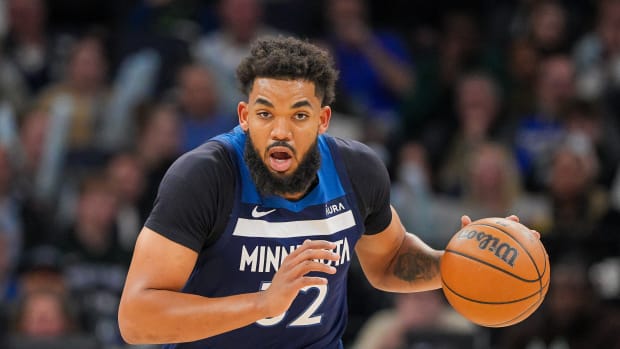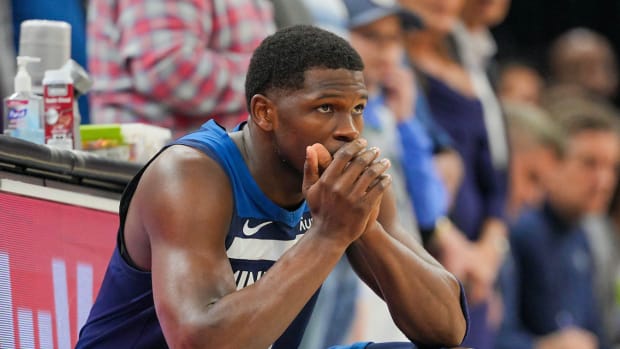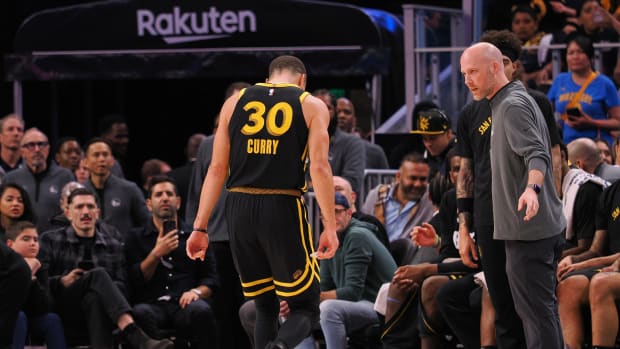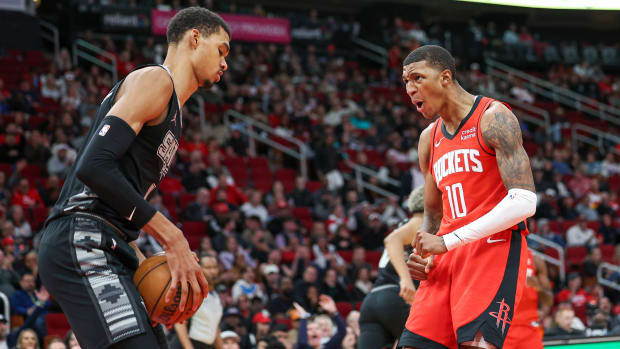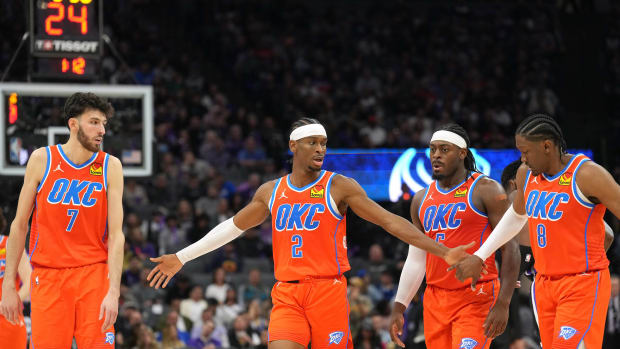Curry’s adjustments carry Warriors over Spurs, sets up historic rematch
Get all of Rob Mahoney’s columns as soon as they’re published. Download the new Sports Illustrated app (iOS or Android) and personalize your experience by following your favorite teams and SI writers.
Whatever discomfort the Warriors experienced in their March 19 loss to the Spurs appears to have subsided. The latest meeting between the NBA’s two definitive titans was a much more relaxed affair for the defending champions, who played comfortably with the knowledge of where and how to create quality shots. Golden State was focused and at ease. That tenor typically spells the demise of any Warriors opponent—even one as formidable as these Spurs. What was at one point a 23-point lead settled as a 112–101 victory for the top-seeded team in the Western Conference. It was the Warriors’ 70th win of the season, and only upon securing it did they lock up home-court advantage throughout the playoffs.
• DATA DIMES: Warriors’ chase for 73 by the numbers | SI’s Warriors tracker
Call this a “film session” victory. Golden State’s execution spoke to their specific corrections–including, but not limited to, a significant change in Stephen Curry’s approach. Curry beat San Antonio’s switches on Thursday by driving and moving without the ball–two actions that are exceedingly difficult for mismatched bigs to defend. Gone was the temptation to create everything off the dribble; Curry gave up the ball early and often, realizing that his influence on an opposing defense was often far more vital than anything he might create on his own. Many Spurs were pulled into Curry’s orbit at the sake of some other responsibility. So out the passes went to a rolling Draymond Green, a sneaking Harrison Barnes, or a looming Andrew Bogut. Golden State’s offense stayed a step ahead by working around mismatches rather than grinding through them.
That Curry was able to make the adjustments he did was really a testament to the Warriors’ shared responsibility. Green proved essential as a facilitator, picking out teammates as they slid open without losing control. Barnes seemed to author a big play whenever a wayward possession fell to him. Bogut not only gave Golden State exactly what it needed defensively (his help was essential in keeping San Antonio off balance), but also as a finisher and high-post traffic controller. Klay Thompson worked for shots well within his right to make, though he ended up going 5-of-13 from the field thanks to numerous rim-outs. He kept his head up, regardless, to feed cutters and swing to shooters.
In total, the Warriors’ approach yielded 33 assists on 45 made field goals. San Antonio’s defense (which allowed Golden State just 20 points in the first quarter) couldn’t hold against a team making so many correct reads. Every Warriors regular seemed to be in tune with the broader approach, down to their collective efforts to push the pace at every opportunity. Some 23 of Golden State’s points were tabbed as “fast-break” points, though many more were made possible by running out, maneuvering through forced cross-matches and finding some open cutter on the secondary break.
This won’t be the last we’ve seen of Gregg Popovich’s tactical counters, though a game like this must be discouraging to him, his staff and the Spurs on the whole. San Antonio can find comfort in its almost uniform dominance; no team has yet beaten the Spurs at home, and their 65-win season is a historical feat in its own right. Golden State, however, showed an ability to battle through perceived mismatches, smooth over the gaps in its defense, neutralize Tim Duncan (who played just seven minutes) and find a downhill flow even within a half-court setting. The average Spurs opponent posts an effective field goal percentage of 47.5%—the best defensive mark in the league. On Friday, the Warriors’ effective field goal percentage was a daunting 61.5%.
Even in Golden State’s relatively lean stretches, San Antonio always seemed to come up leaner. The first period largely consisted of LaMarcus Aldridge post-ups—first successful, then stunted—until a block from Warriors center Andrew Bogut dislocated Aldridge’s finger. The All-Star forward returned to play 29 minutes in total, though his immediate absence contributed to the Spurs’ meager 15-point output in the first quarter. The absence of Boris Diaw (who missed the game with an adductor strain) proved especially painful in light of this development. Periodic rallies through the persistence of Kawhi Leonard and contributions across the board (nine Spurs players chipped in six points or more) were enough only to keep the Warriors on edge and their starters involved. San Antonio, even while inching back, played out the game with the kinds of lax rotations characteristic of a team that knew it had already been beaten.
These two teams will reconvene in San Antonio on Sunday for what looks to be one of the most important regular season games in league history. Potentially at stake is the Warriors’ 72nd win and a share, at the least, in the record for the NBA’s best alltime regular season record. Humming in the background will be the strategic churn (or noticeable withholding) of two likely conference finalists, each a standard bearer for basketball excellence. Should both teams approach the game as if it matters, the start of the playoffs could be upstaged by its prelude.






























